(Haven't been blogging because I've been busy although there is so much I want to blog about. Hopefully I'll get to all the pieces flying around my brain...)
The Park View DC blog has an entry about the new bike parking in the Park View(-Petworth) area (which people, even me, call Petworth, because that's where the Metro station is located, which is called Georgia Avenue-Petworth, not Georgia Avenue-Petworth-Park View. See "
Georgia Avenue Gets More Bike Racks."
His major point is that the hoop racks are boring, and that artistic or otherwise branded racks are better, that the streetscape design is compromised as a result.
The reality is that the difference between one or the other [(a.) and (b.) below] is pretty minimal, and that a more comprehensive approach to placemaking and integrating bicycle facilities within placemaking is required.
a. A traditional hoop/inverted U/staple rack, on Georgia Avenue, image from the Park View blog
b. A branded rack on Barracks Row/8th Street SE
It sounds rote to say you need a great checklist, but you do.
DC needs one for bike facilities generally, for within neighborhoods/districts specifically, and for transportation demand management planning options that concern biking (as well as walking).
One of the problems with "livability planning" in the city is that a master framework of possibilities and best practices hasn't been created, and so what you get is very much dependent on who is assigned as the lead planner for the project, the consultant team that gets the design-engineering contract and how committed they are to bicycling and best practices, and the interest and involvement within the community to push the planners and consultants to do the best job possible.
The problem with this as because bicycle facilities best practices are in flux and not adequately codified (even within community bicycle plans produced with the involvement of the nation's best bicycle and pedestrian planning firms I find wanting the delineation of high quality support facilities) it's very much reliant on having a great skill set amongst the people on a particular project. Sadly, that's pretty rare.
That's where my firm,
BicyclePASS, comes in, what we are working to develop is a wide range of integrated bicycle facilities solutions--our lines of business are focused on bike parking, complementary facilities, bicycle sharing systems, bicycle fleet options of various kinds (for places where bike sharing is a too expensive solution), bike retail combined with commuter and visitor support, as well as other product lines.
At this point we are lining up demonstration projects, to develop and demonstrate best practice.
The more substantive issues are twofold*:
(1) to provide the array of support facilities that bicyclists need so that it's just as easy and comfortable and convenient to make a trip as it would be if they were driving--in other words, there is a system of support facilities that support driving, and bicyclists need comparable supports and
(2) to treat bicycle facilities as key streetscape elements, as high quality design elements that promote biking as well as placemaking, art, sculpture, branding-identity, and other goals and objectives that communities have.
* The third element, really the first, is providing a network of bikeways at the regional, city, district, and neighborhood level, complemented by wayfinding signage systems, maps, and programming. Typically, BicyclePASS focuses on the development of complementary facilities, not the planning and implementation of a complete infrastructure of trails, lanes, and cycletracks.
Branded bike racks aren't even necessarily "artistic" racks. Some people think more of the kinds of racks done by David Byrne in New York City as art, but there are a wide variety of what I think of as whimsical/artistic racks.
But a big problem with artistic racks is that "art" is usually foremost in the project and the racks often don't meet best practices for bike parking. (See
this document on bike parking from the Association of Pedestrian and Bicycle Professionals for guidance.)
For example, I don't see how you can use this "books" bike rack except to lock your bike parallel to the rack. It's not a very efficient use of space.
Besides the issue of whether or not racks are properly installed (above and below),
here are the issues for me:
1. Addressing bike facility improvement (and improvements for walking and transit) systematically within various transportation and streetscape planning initiatives (including, in DC, in "performance parking districts"), utilizing plans as opportunities for systematically defining and implementing a complete and wide ranging array of support facilities.
Bike corral in Columbia Heights -- nicely done but maybe it could be more artistic, or incorporate elements that protect bikes from inclement weather.
"Car" bike rack in Chattanooga

2. Treating bicycle facilities as key elements of streetscape, transportation, and placemaking infrastructure, with high quality design including architectural, art, and sculptural elements.
One of the points I make about bus shelters is that they are primary marketing touchpoints for transit--for people who use transit and for people who walk or ride by and consult/or not the information presented there. So the quality of bus transit street furniture and treatments (see
Transit Waiting Environments from the Cleveland RTA) communicates whether or not we value transit.
An old DC bus shelter (since replaced as part of DC's transit shelter upgrade program).
I make the same point about bike facilities. Their quality, especially when they go beyond strict functionality, communicates whether or not we value bicycling as transportation and want to promote it.
To consider bicycle facilities more as key elements of streetscape, placemaking, and transportation infrastructure, we should consider this framework:
a. functionality and utility (the hoop racks pictured above)
b. branding (the branded racks pictured above)
c. artistic elements that don't compromise functionality
d. bicycle racks as key architectural design elements that complement buildings
Stainless steel bicycle racks at 1st and M Streets NE, Washington, DC.
e. bicycle racks as key design elements that complement space, place, and landscape, such as in parks
How about bike racks like these on a waterfront? (From Dero.)
Or these at a library in Rochester, Minnesota (From Dero.)
3. Distinguishing between short term and long term parking needs -- visitors are looking for outside parking, people working or living in buildings want to park their bikes inside, in secure and protected environments (Bike cages, bike rooms).
And providing protected parking even outside for short term purposes:
HalfArc and UmbrellaArc from BikeArc, available from BicyclePASS
as well as on a long term basis, such as with the Bikestation in DC or other facilities.
4. Providing complementary facilities such as air pumps (I think there should be air pumps at every Metro station), repair stands (in certain locations) and vending options.
Bike Fixtation pump, repair stand and vending machine (available from BicyclePASS).
5. Promoting bicycling, in high profile locations, with public bike traffic counters.
6. MAPS, MAPS, MAPS (and wayfinding systems). Making bicycling easier by posting maps on trails, in transit facilities, and at high profile bicycle facilities.
Bethesda Trolley Trail wayfinding and historical interpretation signage, Twinbrook Metro Station
7. And pushing higher quality best practice differentiated bicycle facilities as part of comprehensive transportation demand management programming.
Not just paying for a bike sharing system (which doesn't go very far for large multiunit residential buildings especially) or putting in some parking, but providing a wide variety of options that are of uniformly high quality and putting soft pressure on developers to integrate such into their project. (More about this some other time.)
Labels: "streets as places", bicycle parking, bicycling, transportation demand management, transportation planning, urban design/placemaking

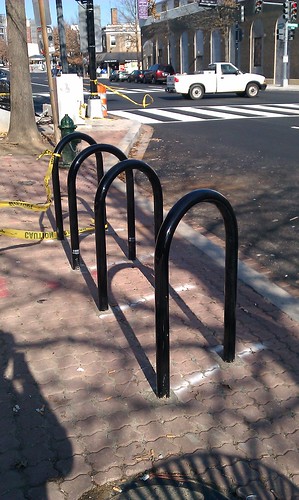
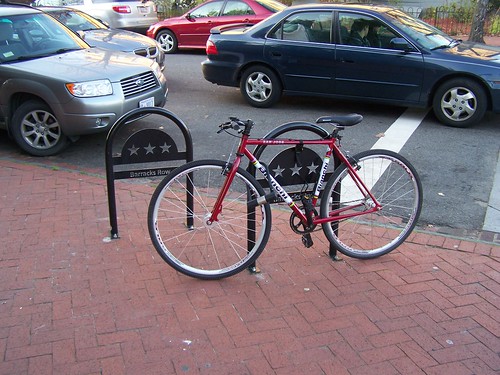

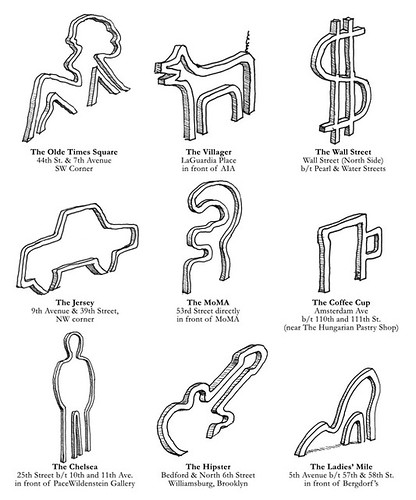
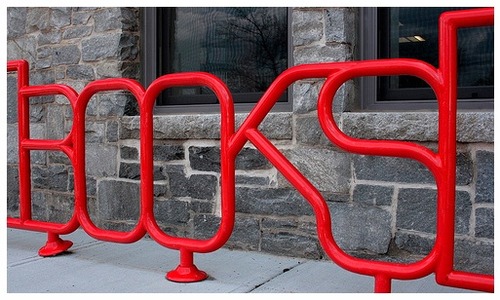
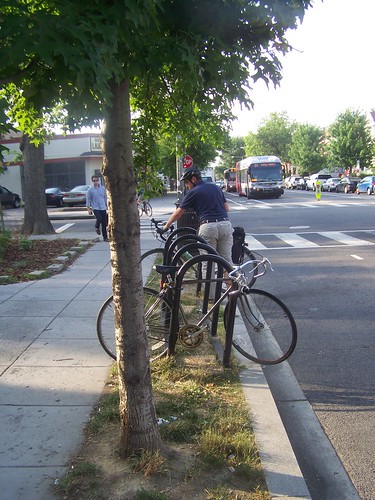



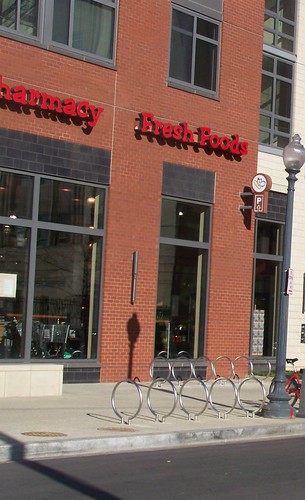
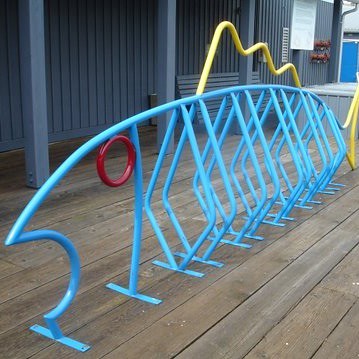



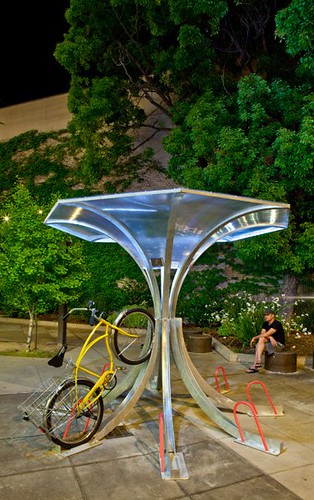
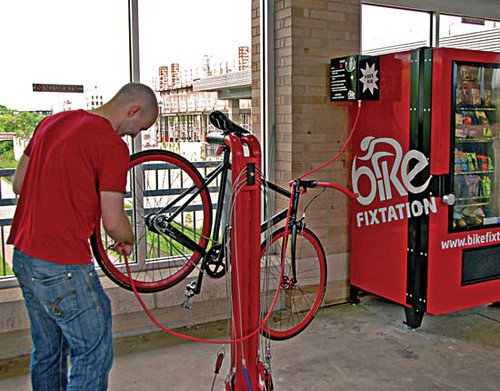
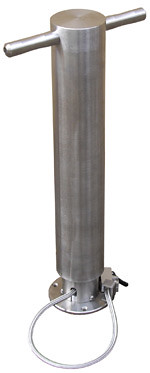
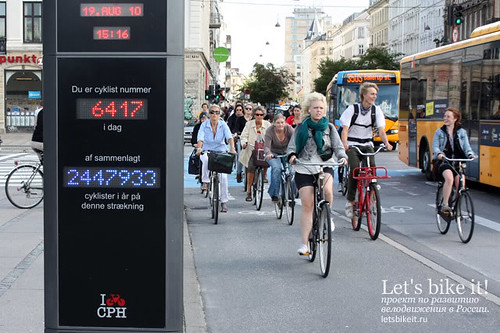
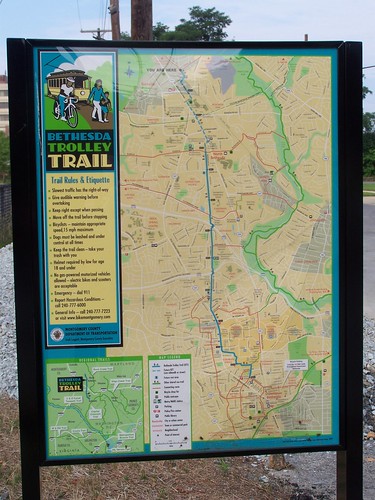
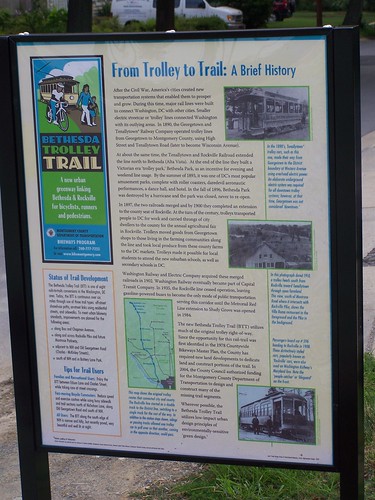
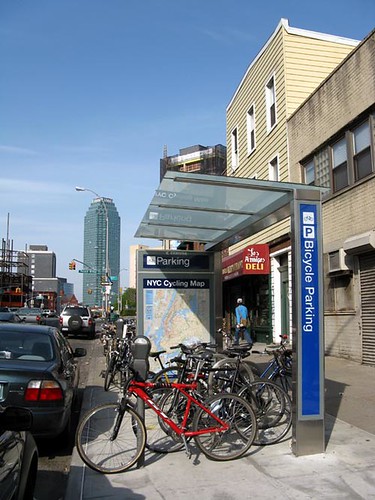



0 Comments:
Post a Comment
<< Home